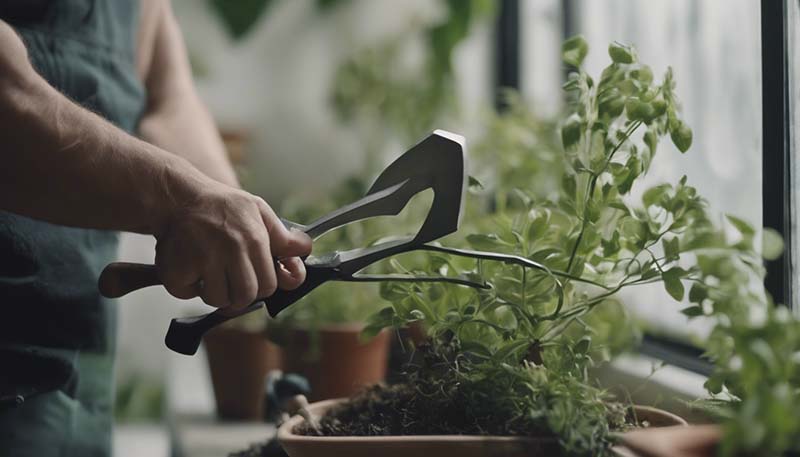Pruning and trimming are essential practices in indoor gardening that help to maintain the health, shape, and size of indoor plants. It is a delicate art that requires patience, precision, and an understanding of the plant\'s needs and growth patterns. In this article, we will explore the basics of pruning and trimming, the benefits of these practices, and tips for successful pruning and trimming of indoor plants.
**Introduction to Pruning and Trimming**
Pruning and trimming are techniques used to remove dead, damaged, or overgrown plant material. Pruning involves cutting back the stems, branches, or leaves of a plant, while trimming involves shaping and maintaining the overall appearance of the plant. Both practices help to promote healthy growth, prevent diseases, and improve the aesthetic appeal of indoor plants.
Advertisement
**Benefits of Pruning and Trimming**
1. **Promotes Healthy Growth**: Pruning and trimming help to redirect the plant\'s energy towards new growth, resulting in a healthier and more vigorous plant.
2. **Shapes the Plant**: Regular pruning and trimming can help to maintain the desired shape and size of indoor plants, preventing them from becoming too large or unruly.
3. **Improves Air Circulation**: Pruning and trimming can help to improve air circulation around the plant, reducing the risk of fungal and bacterial infections.
4. **Removes Dead or Damaged Plant Material**: Pruning and trimming help to remove dead, damaged, or diseased plant material, preventing the spread of diseases and pests.
5. **Encourages Flowering**: Pruning and trimming can help to encourage flowering in indoor plants by redirecting the plant\'s energy towards the production of flowers.
**Tips for Successful Pruning and Trimming**
1. **Use Clean, Sharp Tools**: Use clean, sharp pruning shears or scissors to make clean cuts and prevent the spread of diseases.
2. **Prune at the Right Time**: The best time to prune and trim indoor plants depends on the type of plant and its growth cycle. For most plants, pruning is best done in the spring or early summer when new growth is just beginning.
3. **Prune for the Right Reasons**: Pruning and trimming should be done for specific reasons, such as to remove dead or damaged plant material, to shape the plant, or to encourage flowering.

4. **Make Clean Cuts**: Make clean, diagonal cuts at a 45-degree angle to promote faster healing and reduce the risk of disease.
5. **Avoid Over-Pruning**: Over-pruning can stress the plant and hinder its growth. Remove only the necessary amount of plant material to achieve the desired shape and size.
6. **Monitor the Plant\'s Response**: Keep an eye on the plant\'s response to pruning and trimming. If the plant appears stressed or unhealthy, reduce the amount of pruning and trimming in the future.
**Pruning and Trimming Techniques**
1. **Pinching**: Pinching involves removing the tips of the stems with your fingers, promoting bushier growth and preventing legginess.
2. **Heading Back**: Heading back involves cutting back the stems or branches to a specific point, promoting branching and fuller growth.
3. **Thinning**: Thinning involves removing entire stems or branches to improve air circulation and reduce overcrowding.
4. **Notching**: Notching involves making a V-shaped cut in the stem or branch, encouraging the plant to grow in the desired direction.
5. **Topping**: Topping involves cutting off the main stem or branch at the desired height, promoting bushier growth and preventing the plant from becoming too tall.
**Conclusion**
Pruning and trimming are essential practices in indoor gardening that help to maintain the health, shape, and size of indoor plants. By understanding the benefits of these practices and following the tips for successful pruning and trimming, you can help to ensure the health and beauty of your indoor plants for years to come. Remember to use clean, sharp tools, prune at the right time, and avoid over-pruning to achieve the best results. Happy pruning and trimming!
Comment